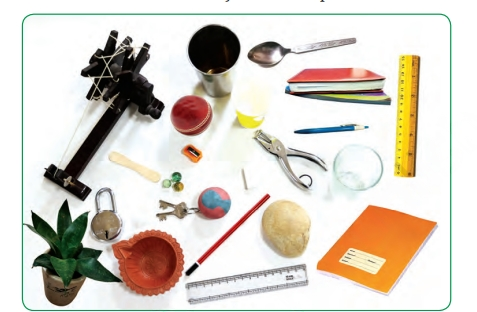Science Notes for Chapter 6 Materials Around Us Class 6 - FREE PDF Download
FAQs on Materials Around Us Class 6 Science Chapter 6 CBSE Notes - 2025-26
1. What are the key points to remember from the Class 6 Science Chapter 6 revision notes on Materials Around Us?
The core points include:
- Materials are used to make every object around us and can be grouped by properties like appearance, hardness, transparency, and solubility.
- Classification of materials helps us understand why certain materials are chosen for specific objects (for example, metals for utensils because they are strong and can withstand heat).
- Concepts such as mass, volume, and matter are fundamental, with matter being anything that occupies space and has mass.
2. How should students use revision notes effectively for Materials Around Us in Class 6 Science?
To use revision notes efficiently:
- Review the key concepts and definitions regularly.
- Create concept maps or tables grouping materials by their properties for visual memory aid.
- Summarize main ideas after reading, and use these summaries for quick last-minute revision.
- Quiz yourself on classification and examples of materials to reinforce learning.
3. What are the major properties used to classify materials in the revision notes for this chapter?
Major properties include:
- Appearance (lustrous or non-lustrous),
- Hardness (hard or soft),
- Transparency (transparent, translucent, or opaque),
- Solubility (soluble or insoluble in water),
- Weight (heavy or light).
4. Why is making classification charts or tables recommended in revision notes for Materials Around Us?
Making charts or tables is helpful because it visually organizes different materials and their properties, making it easier to compare and remember them during revision sessions. This strategy simplifies complex concepts and aids quick recall ahead of exams.
5. In revision notes for Class 6 Science Chapter 6, how can students connect materials’ properties with real-life examples?
Students can connect concepts by observing everyday objects (like utensils, bottles, clothes) and listing which materials they are made of and why. For example, glass is used for windows because it is transparent, and cotton is chosen for clothes because it is soft and absorbent.
6. What does the concept map or summary in the revision notes typically cover for this chapter?
A concept map or summary covers the main types of materials (like metals, plastics, fabrics), their properties, uses in daily life, and how these materials are grouped by characteristics such as hardness, appearance, and solubility. This provides a concise overview for exam preparation.
7. How does regular revision of notes help students according to the guidance in Class 6 Science revision materials?
Regular revision helps reinforce key points, clarify any doubts early, and improve information retention. Revisiting notes weekly ensures students are not overwhelmed before exams and builds a strong understanding of material properties and classifications, as advised by CBSE for 2025–26.
8. What are some practical activities suggested by the revision notes to help understand Materials Around Us?
Activities include listing objects around you and identifying their materials, classifying items in your home by properties like hardness or transparency, and comparing masses or volumes of different substances such as sand, water, and pebbles to understand mass and volume relationships.
9. Why is it important to understand both mass and volume in the context of Materials Around Us, as per revision notes?
Understanding mass (how much material is present) and volume (how much space an object takes) is crucial because both are used to identify and differentiate materials. Practical experiments, like weighing cups with different substances, help internalize these concepts for exams and daily life.
10. How do revision notes on Materials Around Us address common student misconceptions?
Revision notes clarify that materials can have similar appearances but different properties, like two shiny objects which may differ in hardness. They emphasize testing properties (like seeing if something is soluble or hard) rather than assuming based on looks alone, helping prevent confusion in the exam.





















